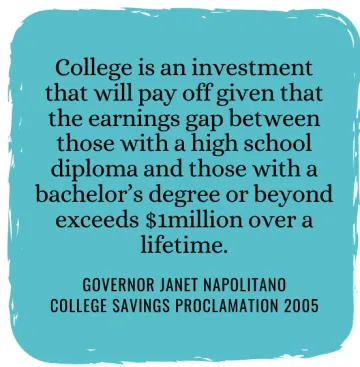The Student Manual

Getting to and succeeding in college requires a team effort. One of your first steps on the path to college is building your team of trusted advisers — individuals who care about you and your future and who will support and guide you.
Who Should Be on Your Team?
• Parents and guardians can provide personal support.
• Teachers can offer academic support, help with your college application essay, and write college recommendations.
• School counselors can help you choose college prep classes, focus your college search, meet application requirements and deadlines, and write college recommendations.
• Mentors (this can be a coach, trusted family friend, or program adviser) can offer advice and encouragement.
• Family members and friends can share valuable insights and emotional support.

Colleges want successful, involved students who care about school and their community. Becoming a well-rounded student shows your ability to balance academics with out-of-school activities.
1. Get Involved and Show Leadership
Volunteering, working, or participating in extracurricular activities — while earning good grades -demonstrates your work ethic and commitment to the community. Long-term participation in sports, clubs, volunteerism, and part-time jobs showcases your responsibilities, interests, and talents. Also consider the value of your contributions at home: caring for younger siblings and ailing adult family members, household management, working to supplement household income, translating for non-English speaking family members, etc.
2. Be pro-active about academic difficulties
Colleges do not seek perfection. They look for improvement throughout high school, especially
during your junior and senior years. If you are having difficulty in a class, act quickly:
• Ask teachers about improving your grades.
• Find out about tutoring options.
• Consider attending summer school if needed.
3. Develop Good Study Habits
• Learn to prioritize. A test tomorrow is more important than an assignment due next week.
• Take careful notes and be sure to review them later, then review them again.
• Read, read, read! To develop a strong vocabulary and prepare for college-level material, read every day.
• Figure out where and when you work best. Experiment, and when you find something that works, stick with it.
• Establish a daily routine for doing homework. Tackle the most challenging tasks when you are most alert and focused.
4. Set Personal Goals
You know what you want: to get into college, obtain your degree, and start a career. The question is: how
do you get there? Setting specific, well-defined goals will help you progress toward your dreams.
Your college “fit” is the school that is the best match for you academically, socially, and financially.

• Academic: Your academic fit is a school that matches your academic profile — your high school GPA and SAT/ACT scores will be similar to those of accepted students. It will offer majors and courses that interest you and provide opportunities that are attractive to you, such as study abroad, internship and co-op programs, or the opportunity to do research with a faculty member.
• Social: Your social fit is a school that fits your personality and preferences — a school where you will feel comfortable and fulfilled. To find your social fit, you will look at a school’s culture and distinguishing characteristics, such as location, size, diversity, extracurricular and athletic offerings, inclusivity, academic supports, and housing.
• Financial: Finding your financial fit means you will be able to afford the total cost of earning your
degree. College costs and financial aid packages vary by school, so it is important to research a range of schools. No college is your “right fit” if you cannot afford to go there. Research the financial aid policy at each college on your list, including colleges that meet 100% of demonstrated need.
After discussing the three kinds of fit — academic, social, and financial — you will need to decide which of these is the most important and why. Use this information to begin narrowing your list. On the next page, we will share the stories of real-life recent high school graduates who determined their best fit.
Your application is your opportunity to share your accomplishments and demonstrate your potential. Preparing a strong application takes time and hard work. By breaking down the process into manageable steps, you will be able to complete each step fully and on time and present your best self.

Generally, there are four options for college admissions. The option you select will impact when your application is due, when you find out if you are accepted, and your ability to choose a school based on how much financial aid it offers. Options and deadlines vary by schools, so carefully research the schools to which you are interested in applying.

Be Realistic
Be realistic about your academic profile: your GPA, class rank, and standardized test scores tell a school
a lot about you. Schools will compare your academic profile to that of admitted students to assess your potential for success at their institution.
Segment Your List
Organize your list into three groups: reach schools
(two), target schools (two to four), and likely admit
schools (two). All of these should be schools you
would be excited to attend.
• “Reach” schools are colleges where your chance of being accepted may not be as high as at other
institutions.
• “Target” schools are strong matches, based on your academic profile, financial aid needs, and
social preferences.
• “Likely admit” schools — sometimes called “safety” schools — are colleges where your test
scores, GPA, and class rank meet or exceed those needed for admission.
Becoming a successful college applicant and college student takes planning, vision, and dedication. Understanding yourself, your goals, and your options — and doing your best in high school — puts you in a position to make good choices about your future.
For more details about Applications, Financial Aid, Scholarships
https://startnow.arizona.edu/

